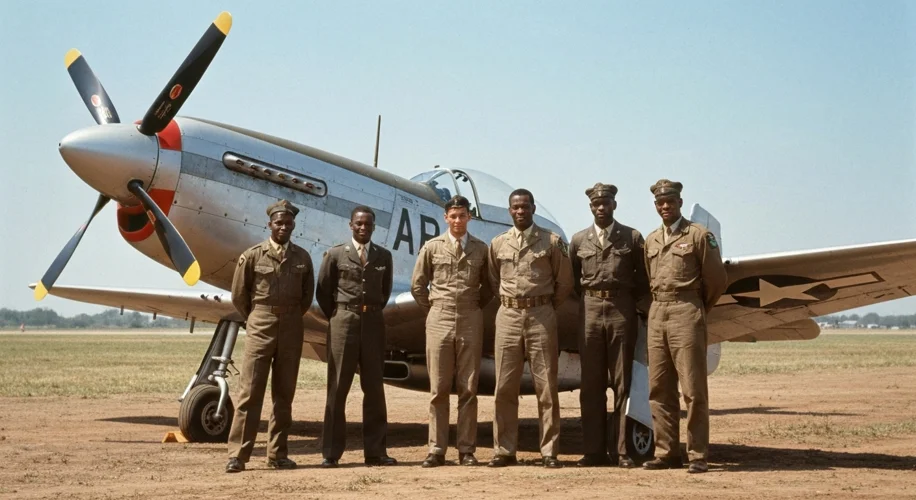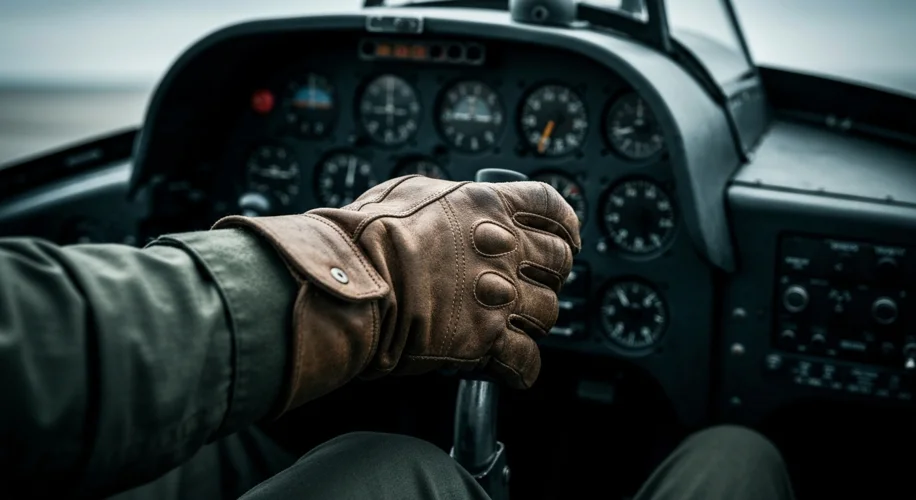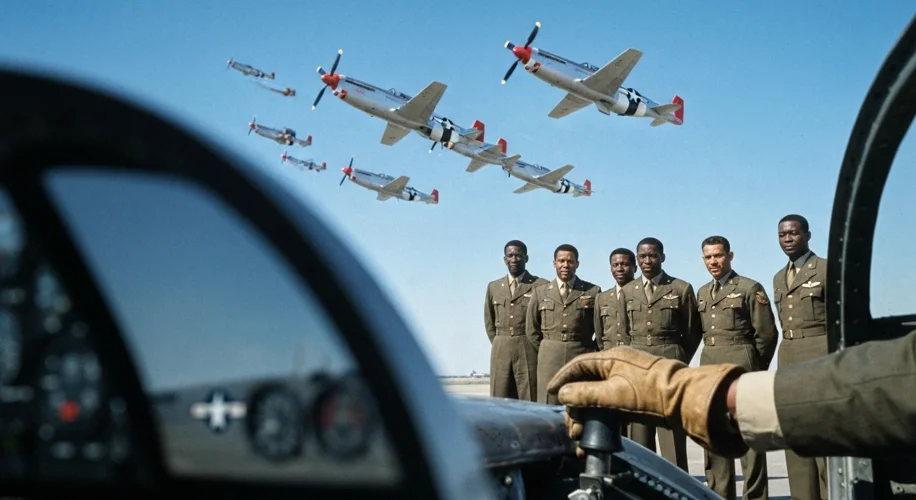The roar of engines, the sting of anti-aircraft fire, the desperate dance of aerial combat – these were the realities of World War II. But for a group of American men, the fight for freedom abroad was inextricably linked to a battle for dignity and recognition at home. They were the Tuskegee Airmen, the first African-American military aviators in the United States Army Air Corps, and their story is one of courage, resilience, and a profound challenge to the entrenched racism of their time.
Imagine the scene: the year is 1941. America is arming itself for global conflict, yet its own military is deeply segregated. The very idea of a Black man piloting a fighter jet, let alone leading a bombing mission, was met with widespread skepticism and outright prejudice. The prevailing, ugly stereotype was that Black men lacked the intellect, the discipline, and the sheer nerve required for aviation. This deeply ingrained bias wasn’t just a matter of opinion; it was a policy that kept qualified Black soldiers confined to menial roles, their potential tragically untapped.
But change was stirring. The “Double V” campaign – victory abroad against fascism and victory at home against racism – captured the spirit of a community yearning for equality. Pressure from civil rights organizations and the urgent need for military personnel created an opening, however small. In response, the U.S. Army established an experimental aviation program for Black pilots at Tuskegee Army Air Field in Alabama. This wasn’t an act of altruism; it was a calculated gamble, a test to prove the naysayers right or, perhaps, spectacularly wrong.

The training itself was grueling. These men, handpicked from across the nation, faced not only the demanding curriculum of flight school but also the constant specter of discrimination. They endured separate barracks, often inferior equipment, and the constant scrutiny of a system that seemed to expect them to fail. Yet, from this crucible of adversity, the legendary 332nd Fighter Group and the 477th Bombardment Group began to take shape.
Among them was a young man named Benjamin O. Davis Jr., a graduate of West Point who would rise to lead the 332nd Fighter Group. His leadership, marked by unwavering professionalism and a keen tactical mind, became the bedrock upon which the Tuskegee Airmen built their reputation. There was also the charismatic Lee Archer, a decorated fighter pilot who would later recount harrowing combat missions. And countless others – ground crew, mechanics, navigators, bombardiers – whose contributions were as vital as those who flew the planes.
The Tuskegee Airmen, also known as the “Red Tails” for the distinctive red paint on their P-51 Mustang tails, proved their mettle in the skies over Europe. Their primary mission was to escort Allied bombers on deep-penetration raids into enemy territory, a notoriously dangerous assignment. They were tasked with protecting the bombers from German fighter attacks, a role that required exceptional skill, bravery, and unwavering vigilance.
Their combat record spoke for itself. Flying hundreds of combat missions, they destroyed enemy aircraft, bombed strategic targets, and sustained remarkably low bomber loss rates – a testament to their effectiveness and dedication. They earned numerous Distinguished Flying Crosses, Silver Stars, and Purple Hearts. Their prowess in aerial combat earned them the grudging respect of their white counterparts and the admiration of the enemy. The myth of Black inferiority in aviation was being shattered, one dogfight at a time.
But the fight wasn’t over when the planes landed. Back on American soil, the same segregation and prejudice that they had faced before deployment continued. Despite their heroic service and undeniable contributions to the war effort, they were often treated as second-class citizens. Their victories in the air did not automatically translate into equality on the ground.

The impact of the Tuskegee Airmen extended far beyond the battlefield. Their success served as a powerful symbol of Black capability and a catalyst for the desegregation of the U.S. military. Their bravery and perseverance paved the way for future generations of African-Americans to pursue careers in aviation and in all branches of the armed forces. They demonstrated that talent and courage know no color line, a message that resonated deeply within the burgeoning Civil Rights Movement.
The story of the Tuskegee Airmen is more than just a chapter in military history; it is a profound narrative of human spirit triumphing over systemic injustice. It is a reminder that progress often comes through the unwavering dedication of individuals who dare to challenge the status quo, even when the odds are stacked against them. Their legacy is etched not only in the annals of aviation but in the ongoing struggle for a more just and equitable world.

Today, their story is rightfully celebrated, a testament to the fact that heroes can emerge from the most unexpected and challenged circumstances. The Tuskegee Airmen did not just fight for victory abroad; they fought for the soul of America, and in doing so, they helped to reshape its future.

